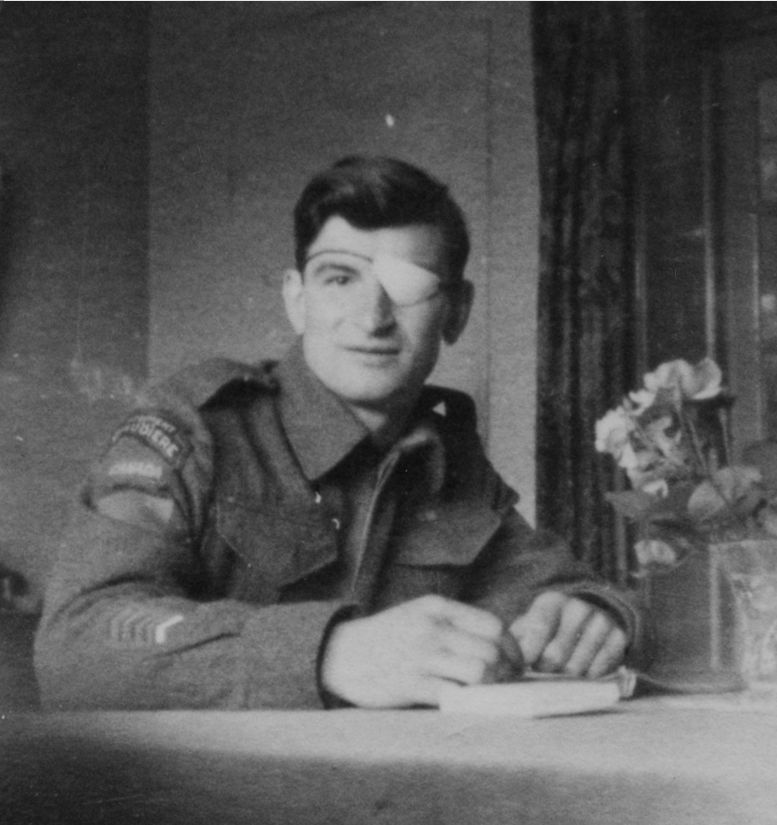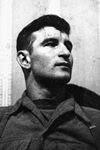There's Now a West Point Over Here
The War Illustrated, Volume 6, No. 154, Page 748, May 14, 1943.
Everyone has heard of the United States Military Academy at West Point, New York; since it opened in 1802 it has trained many thousand highly educated and efficient officers for the U.S. Army. This article by LEIGH M. SCULLY describes another and much younger "West Point" – one which the War has caused to be established "somewhere in England".
Sergeant Norris Nevils has been selected and is just starting his training as an officer. He is 30, his home-town is at Charleston, South Carolina. He used to be swimming and diving instructor at Miami Beach, Florida, and among his best friends is Johnny Weissmuller. But that's not why Sergeant Nevils and 64 other men with him are the centre of attraction. The reason is that he's among the first members of the United States Forces in Europe to train as an officer at "West Point Somewhere in England". And that's of vital interest to everybody in Britain, because it is positive proof that the expansion of the United States Forces in Europe is so big that now new officers have to be found from the ranks of the men serving here.
West Point, the U.S. officers' training college in America, is famous all over the world, chiefly because of Hollywood interpretations of it. But at this "West Point" of England, young and old soldiers, from the sunny beaches of Miami to the crowded streets of New York City, are going through a three months' course packed into which is the military, tactical and toughening training which America's West Point spreads over four years.
The curriculum is divided into four sections: Weapons, tactics, general subjects and specialized subjects.
It is not sufficient for candidates to know all about – and how to operate – every pattern of American rifle, light and heavy machine-gun, anti-tank gun, mortar and grenade; they must also know all about British arms.
On the tactical side the candidates learn to command soldiers, squads and units up to battalions. Under this heading, too, are aircraft identification and combat drill. Daily calisthenics, toughening over a 450-yard obstacle course eight times a week, hand-to-hand combat, forced marches from four to 23 miles, night problems for scouting and patrolling – these are other means of turning out better than the best.
Here is a typical day's work. Reveille at 6.30, parade; 7.15, breakfast; 8.0, classroom, when talks on various subjects are given by trainees; lectures until noon, lunch; 1 p.m., drill; 2 p.m., obstacle course, cross-river bridge building; then weapons class until 6 p.m.; dinner; 7 p.m. to 9 p.m., study for next day's subjects. Bed at 10 o'clock, tired but still enthusiastic.
This goes on for six days of the week. Some of the men have to polish up subjects on Sunday. And there is no leave in the whole three months!
Colonel Walter Layman, Commandant of the training centre, believes in living as his students do. He has no orderly, and relies on an alarm clock to awaken him. The other day he had a guest, and the colonel promised to wake him early.
The guest was roused by a knock on the door. "Five-thirty", called the colonel. The guest looked at his watch and saw it was only 12.10 a.m. Half an hour later there was another knock, and the colonel asked: "Are you ready?" The guest protested that Colonel Layman had made a mistake, that the time was not 5.30 but 12.40. The colonel called a major and asked the time. The major confirmed that the guest's watch was right. The colonel had bathed, shaved and was fully dressed. He even had his gloves on. He went back to bed, but was up again at 6 a.m.
Of the 65 men now training at "West Point", 14 are coloured soldiers. They were chosen by the only negro General in the U.S. Army, Brig-Gen. Benjamin O. Davis. A list of 84 men was put up to Davis, and the 14 now at "West Point" are the pick – not only fine strapping fellows but also A.1. in mental ability. One was a law student, another a doctor, before the War. They all work with their other colleagues at "West Point" without any consideration of colour.
At the original West Point there is a magnificent chapel with stained glass windows in which are depicted mottoes for each phase of training. At this "West Point" the young officers attend a village church that is similar to the one in the film Mrs. Miniver.
The only motto they have is on a banner fixed with drawing pins to the wall above Colonel Layman's fireplace. It reads Melior Quam Optimus (Better than the best). Col. Layman explained this by saying: "We've got to turn out officers who know more, can take more, and are better leaders than Germany can produce. To be as good is not enough."
Index
Previous article
Helicopters Should Be Useful Against U-Boats
Britain has placed orders in America for helicopters, announced Capt. H. Balfour, Under-Secretary of State for Air, in the House of Commons on March 11. These aircraft, he went on to state, would be e
Next article
The Battle Fronts
On May 6, 1943, the battle of Tunisia was decisively won by a blitzkrieg attack following on a series of desperate encounters in which the enemy's troops were exhausted and his reserves expended. The





